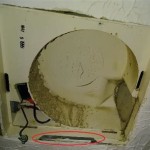How To Install Luxury Vinyl Tile (LVT) in Bathroom Walls
Luxury Vinyl Tile (LVT) has emerged as a popular choice for bathroom renovations, extending its application beyond floors to walls. The appeal of LVT lies in its durability, water resistance, aesthetic versatility, and ease of maintenance. Installing LVT on bathroom walls can transform the space, providing a modern and stylish look while also offering practical benefits like moisture protection and ease of cleaning. This article provides a comprehensive guide on how to install LVT as wall tiles in a bathroom.
Before embarking on the installation process, careful planning and preparation are essential. This stage lays the foundation for a successful and visually appealing outcome. Adequate preparation prevents common issues such as improper adhesion, uneven surfaces, and ultimately, a compromised finished product.
1. Preparation and Planning
The initial step involves assessing the existing wall surface. The wall needs to be structurally sound, clean, and free from any loose debris, paint, or wallpaper. Any imperfections or damage must be addressed before proceeding. Patch any holes or cracks with joint compound, allowing it to dry completely and sanding it smooth. If the existing wall surface is glossy, sanding it down with medium-grit sandpaper will create a better surface for adhesion.
Measuring the wall area is crucial for determining the quantity of LVT required. Measure the height and width of each wall section that will be covered with LVT. Multiply these measurements to determine the square footage of each section. Add an extra 10-15% to the total square footage to account for cuts, waste, and potential errors during the installation process. This ensures that you have enough material to complete the project without running short.
Selecting the appropriate LVT for wall application is important. While most LVT is designed for flooring, some are better suited for walls due to their thickness and weight. Thinner, lighter LVT options are generally easier to handle and install on vertical surfaces. Look for LVT specifically marketed for wall applications, or consult with a flooring professional to determine the most suitable type for your project. Consider the aesthetic desired and choose LVT with the appropriate color, pattern, and texture. It's advisable to purchase all LVT from the same batch to ensure color consistency.
Gather the necessary tools and materials. These typically include: LVT tiles, a measuring tape, a level, a utility knife or scoring tool, a straight edge (metal ruler or T-square), adhesive (specific to LVT wall applications), notched trowel, caulk gun (if using caulk adhesive), spacers, a rubber mallet, a seam roller, safety glasses, and gloves.
A crucial part of planning is determining the layout of the LVT. Consider starting with a full tile at the most visible corner or along a specific focal point. This will ensure a visually appealing and balanced appearance. Dry-fit the tiles on the floor to visualize the layout and make any necessary adjustments before applying adhesive. This is particularly important if the wall is not perfectly square or if you plan to incorporate decorative elements.
2. Installation Process
Once the preparation is complete, the installation process can begin. The first step is to apply the adhesive to the wall. The type of adhesive will depend on the recommendations of the LVT manufacturer. Common options include acrylic-based adhesives, construction adhesives, or specific LVT wall adhesives. Follow the manufacturer's instructions carefully regarding the application method, open time, and curing time. Generally, the adhesive should be applied using a notched trowel to create ridges that help with adhesion and allow for air circulation.
Begin by applying the adhesive to a small section of the wall, no more than a few tiles in size. This prevents the adhesive from drying out before the tiles are installed. Hold the trowel at a 45-degree angle and apply a thin, even layer of adhesive, ensuring that the ridges are consistent.
Carefully position the first tile in the designated starting point. Press the tile firmly against the adhesive, ensuring full contact. Use a rubber mallet to gently tap the tile, securing it in place. Use a level to ensure that the tile is perfectly aligned both horizontally and vertically. Any misalignment in the first tile will be amplified across the entire wall, so precision is critical.
Continue installing the remaining tiles, working in small sections to prevent the adhesive from drying out. Use spacers between tiles to maintain consistent grout lines. The size of the spacers will depend on the desired grout line width. Press each tile firmly against the adhesive and tap it with a rubber mallet to ensure full contact. Periodically check the alignment of the tiles with a level to ensure that they are straight and even.
When reaching corners, edges, or obstacles such as pipes or electrical outlets, precise cutting of the LVT is necessary. Measure the space accurately and transfer the measurements to the tile using a measuring tape and a straight edge. Use a utility knife or scoring tool to score the tile along the marked line. Snap the tile along the score line. For intricate cuts or curves, a jigsaw or coping saw may be required.
After cutting a tile, dry-fit it in place to ensure a proper fit before applying adhesive. Once satisfied with the fit, apply adhesive to the back of the tile and press it firmly against the wall.
As you install the tiles, periodically clean any excess adhesive from the surface with a damp cloth. This will prevent the adhesive from drying and becoming difficult to remove. Once all the tiles are installed, use a seam roller to ensure that the edges are securely bonded to the wall. Pay particular attention to the seams between tiles to prevent lifting or peeling.
3. Finishing Touches
After the adhesive has fully cured, which usually takes 24-48 hours, the finishing touches can be applied. The first step is to apply grout, if desired. Not all LVT installations require grout, but it can enhance the appearance and provide additional protection against moisture. Select a grout color that complements the LVT and follow the manufacturer's instructions for mixing and application.
Apply the grout to the seams between the tiles using a grout float. Press the grout firmly into the seams, ensuring that they are completely filled. Remove any excess grout from the surface with a damp sponge, working diagonally across the tiles to avoid pulling the grout out of the seams. Rinse the sponge frequently in clean water.
After the grout has partially dried, use a grout sponge to clean any remaining residue from the surface of the tiles. This will help to reveal the true color of the LVT and create a clean, polished look. Allow the grout to fully cure according to the manufacturer's instructions.
Caulk is another important finishing touch, particularly in areas where the LVT meets other surfaces, such as the floor, ceiling, or fixtures. Apply a bead of caulk along these seams to create a watertight seal. Use a caulk gun to apply the caulk evenly and smoothly. Smooth the caulk with a wet finger or a caulk smoothing tool to create a professional finish.
Inspect the entire installation for any imperfections, such as loose tiles or uneven grout lines. Address any issues promptly to prevent further damage. Clean the LVT with a mild detergent and water to remove any remaining dirt or debris. Avoid using harsh chemicals or abrasive cleaners, as these can damage the surface of the LVT.
Consider installing trim or molding along the edges of the LVT to create a finished look. Trim can be used to cover any exposed edges or to transition to other wall surfaces. Choose a trim style and color that complements the LVT and the overall design of the bathroom. Install the trim using adhesive or nails, ensuring that it is securely attached to the wall.
Finally, step back and admire the transformed bathroom. With careful planning, meticulous installation, and attention to detail, LVT wall tiles can create a stunning and durable finish that will enhance the beauty and functionality of the space.

Achieve High End Hardwood Looks For Your Dream Bath In Lvt

Luxury Vinyl Tile Floors For A Bathroom The Ultimate Guide

Vinyl Planks In Bathrooms Residential Inspiration Flooring

How To Install Vinyl Plank Flooring In A Bathroom Fixthisbuildthat

How To Install Vinyl Plank Flooring In A Bathroom Fixthisbuildthat

How To Install Groutable L And Stick Tile In Your Bathroom

How To Install Vinyl Plank Flooring In A Bathroom Fixthisbuildthat

Vinyl Flooring Bathroom Update Angela Marie Made

Vinyl Planks In Bathrooms Residential Inspiration Flooring

Installing Vinyl Plank Flooring Lifeproof Waterproof Rigid Core Sustain My Craft Habit
Related Posts







